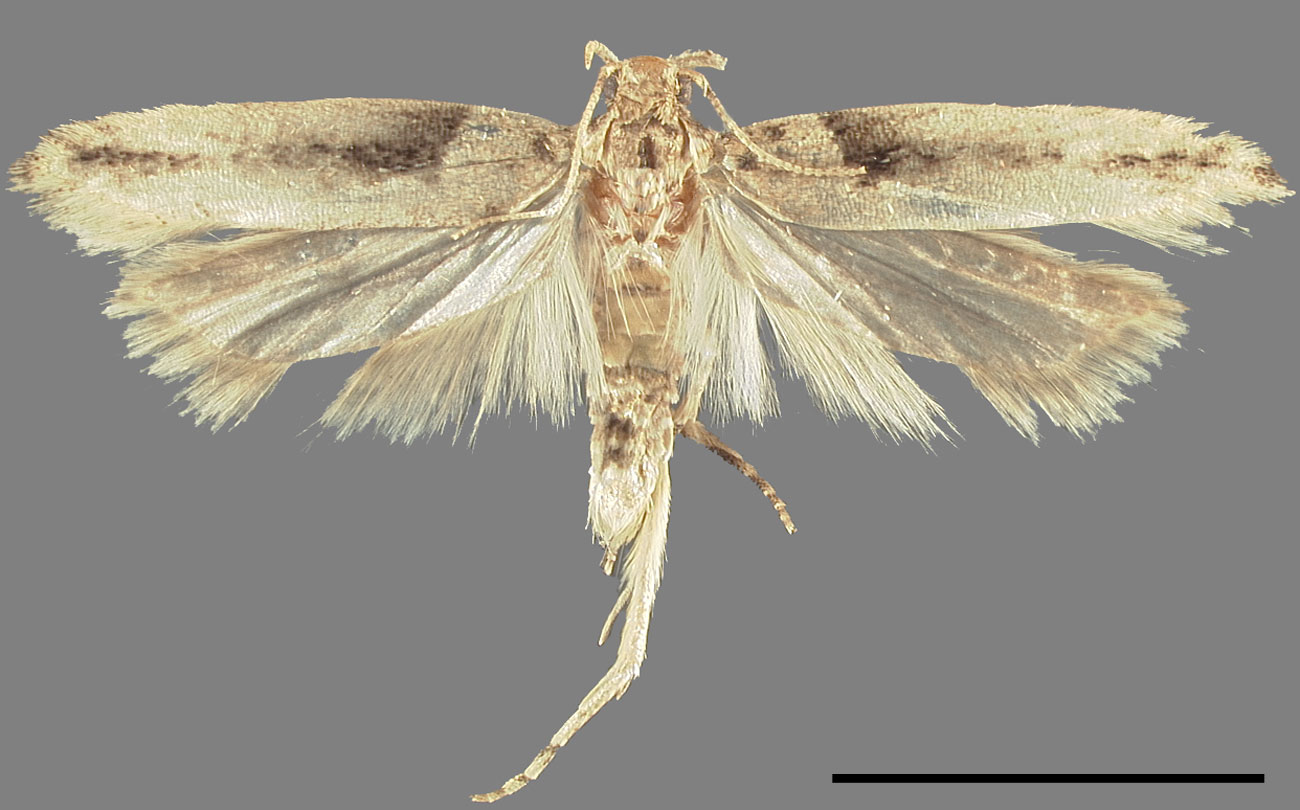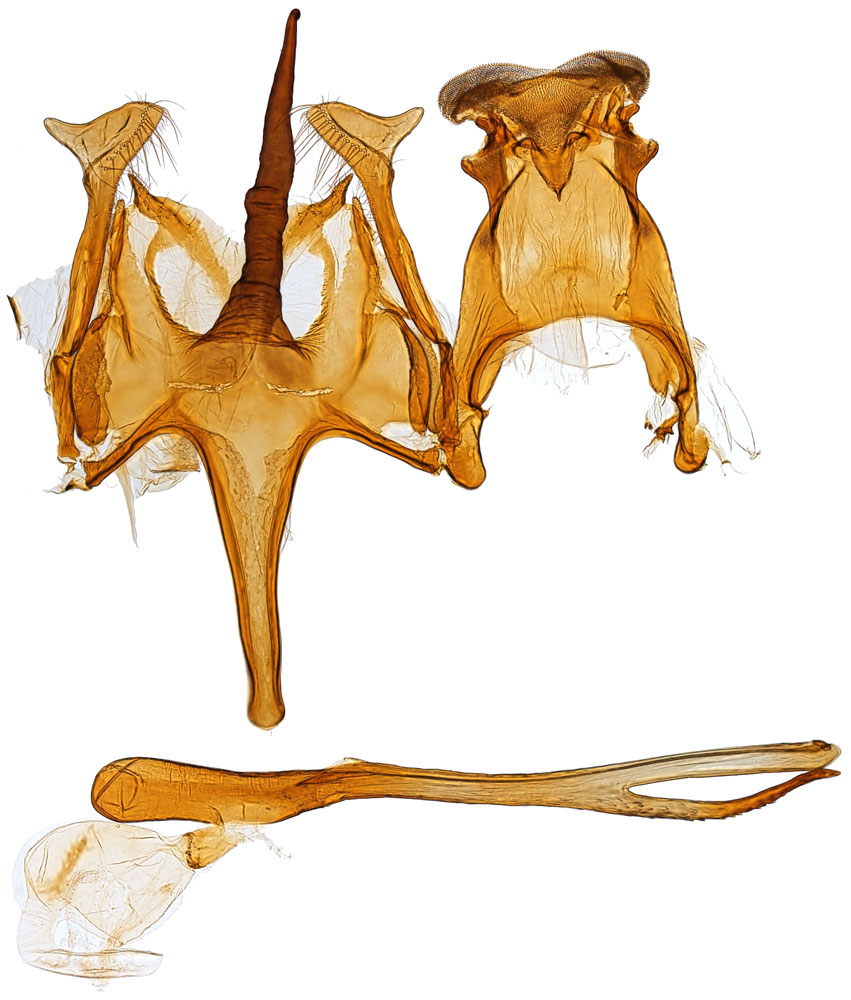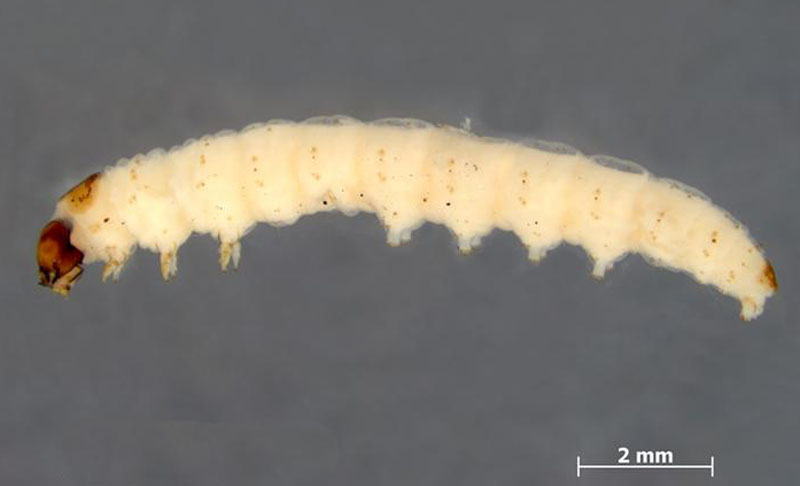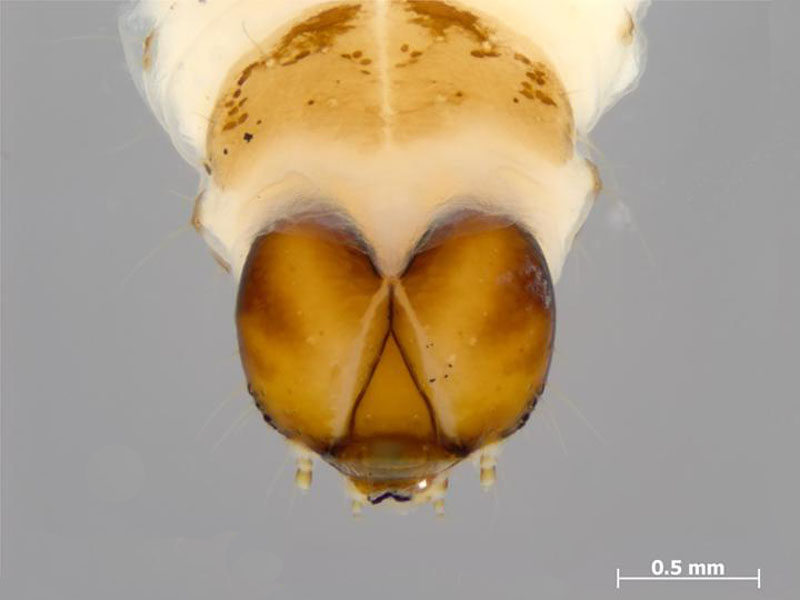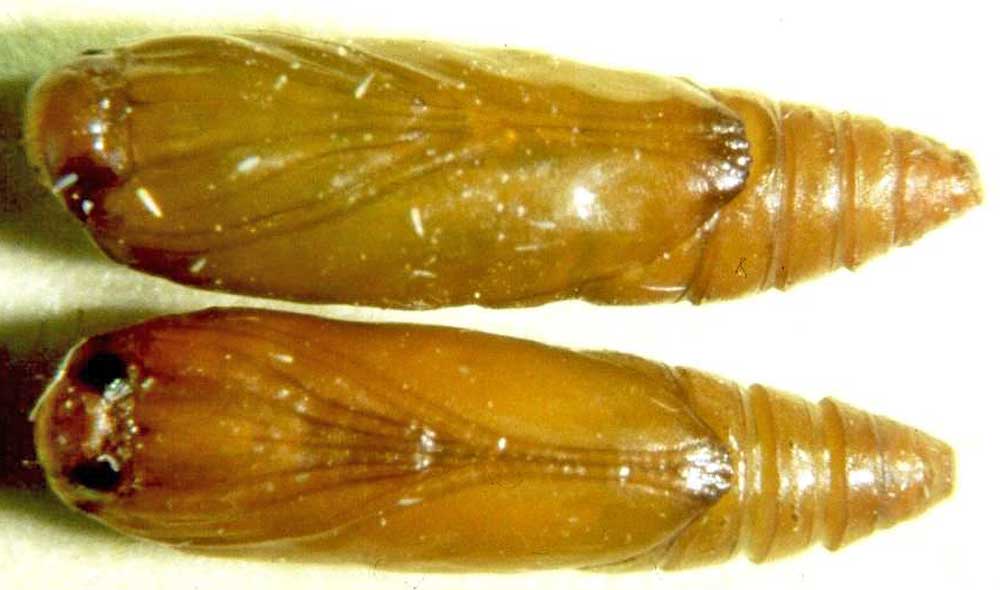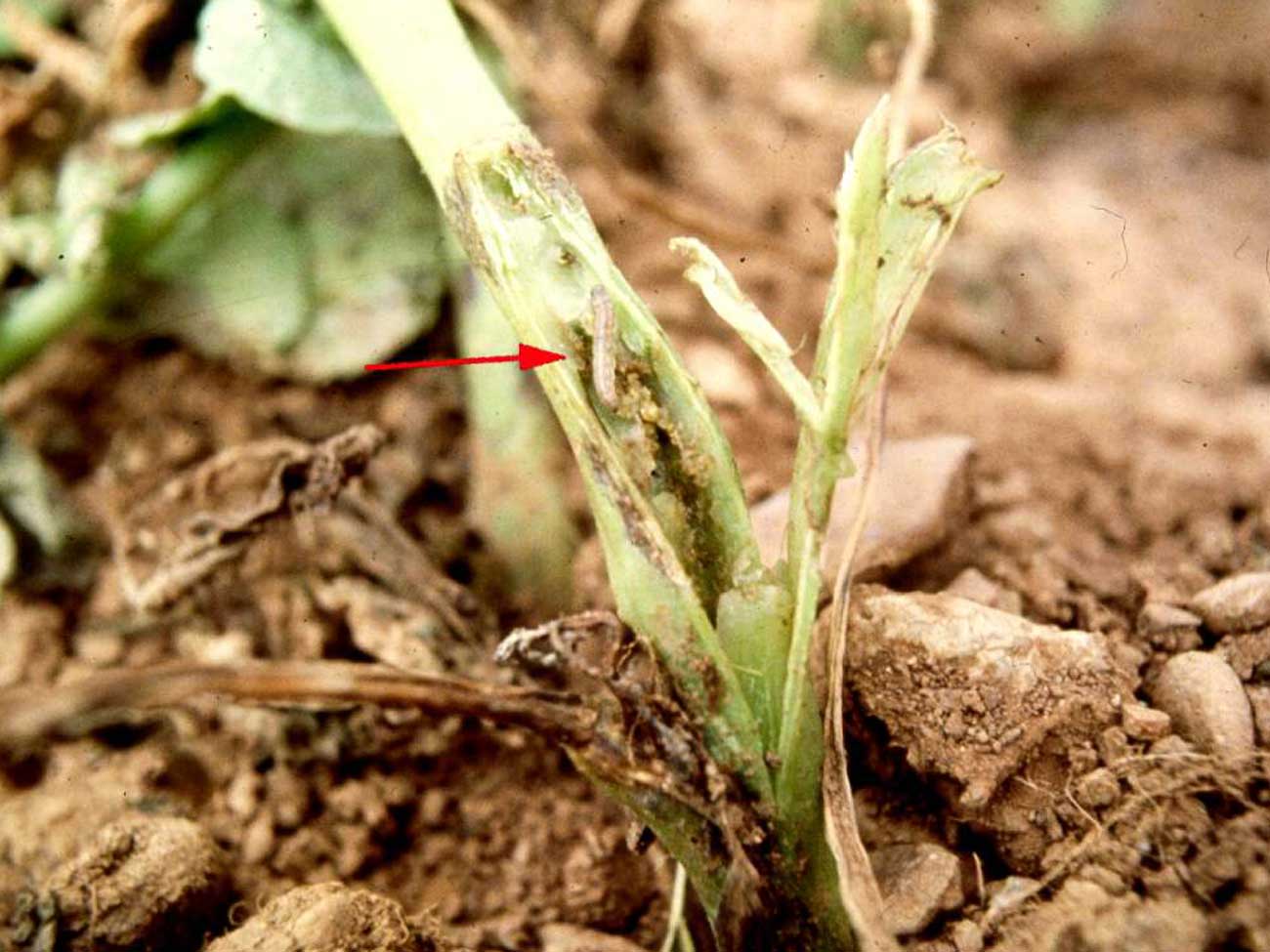Symmetrischema tangolias
|
Symmetrischema tangolias male habitus. Scale = 5 mm. |
|
Symmetrischema tangolias female habitus. Scale = 5 mm. |
|
Symmetrischema tangolias head. |
|
Symmetrischema tangolias male genitalia. |
|
Symmetrischema tangolias female genitalia. |
|
Lateral aspect of Symmetrischema tangolias larva. © Ministry for Primary Industries, Plant Health and Environment Laboratory (New Zealand). |
|
Head of Symmetrischema tangolias larva, lateral aspect. © Ministry for Primary Industries, Plant Health and Environment Laboratory (New Zealand). |
|
Head and prothoracic shield of Symmetrischema tangolias larva. © Ministry for Primary Industries, Plant Health and Environment Laboratory (New Zealand). |
|
Pupa of Symmetrischema tangolias. © Frans C. Griepink, Pherobank (The Netherlands). |
|
Larva of Symmetrischema tangolias feeding inside stem of potato plant. © Frans C. Griepink, Pherobank (The Netherlands). |
|
Larval feeding damage in potato tubers by Symmetrischema tangolias. Photo © Frans C. Griepink, Pherobank The Netherlands. |
Name
Symmetrischema tangolias (Gyen, 1913)
Common names: South American potato tuber moth; Spotted or Andean potato tuber moth; tomato stem borer (in Australia)
Original combination: Trichotaphe tangolias Gyen, 1913
Synonyms:
- Phthorimaea plaesiosema Turner, 1919
- Phthorimaea aquilina Meyrick, 1917
- Phthorimaea melanoplintha Meyrick, 1923 [1925]
- Gnorimoschema tuberosella Busck, 1931
Classification: Gelechioidea: Gelechiidae: Gelechiinae: Gnorimoschemini
Adult recognition
Adults are about 6.5–8.2 mm in forewing length. They are yellowish white to light brown or brownish gray, with a large, broad, grayish black streak in the middle section of the wing that is abruptly demarcated on the basal side. The labial palpusLabial palpus:
The more prominent, elongate pair of appendages on the head, usually three-segmented (pl. palpi).
-800px.jpg) is upturned. The hindwing is trapezoidal without hair-pencils in males. The male genitalia have an uncusUncus:
is upturned. The hindwing is trapezoidal without hair-pencils in males. The male genitalia have an uncusUncus:
The prominent projection from the dorsal tegumen of the male genitalia. May be variously shaped as a hook, knob, hood, etc.
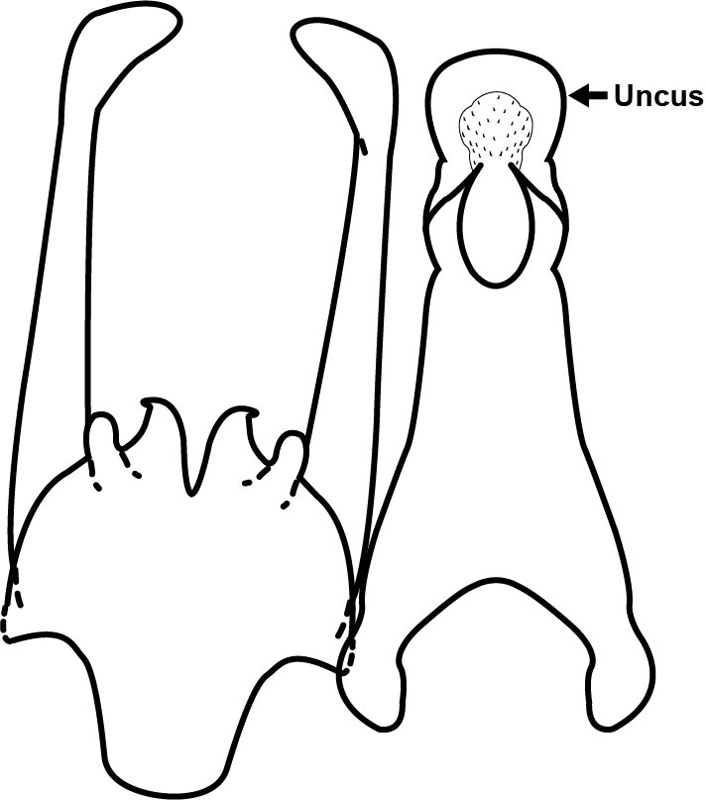 with small lateral stubs, short and straight valvaValva:
with small lateral stubs, short and straight valvaValva:
One of the pair of large lateral appendages of the male genitalia (pl. valvae).
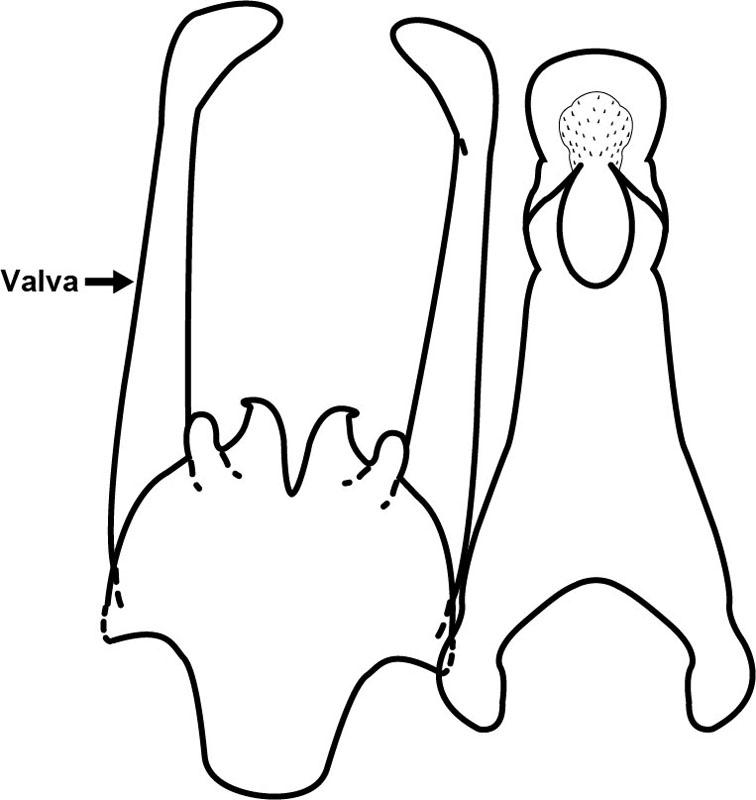 with falcate apex, vinculumVinculum:
with falcate apex, vinculumVinculum:
The ventral half of the male genitalia, from which the valvae arise.
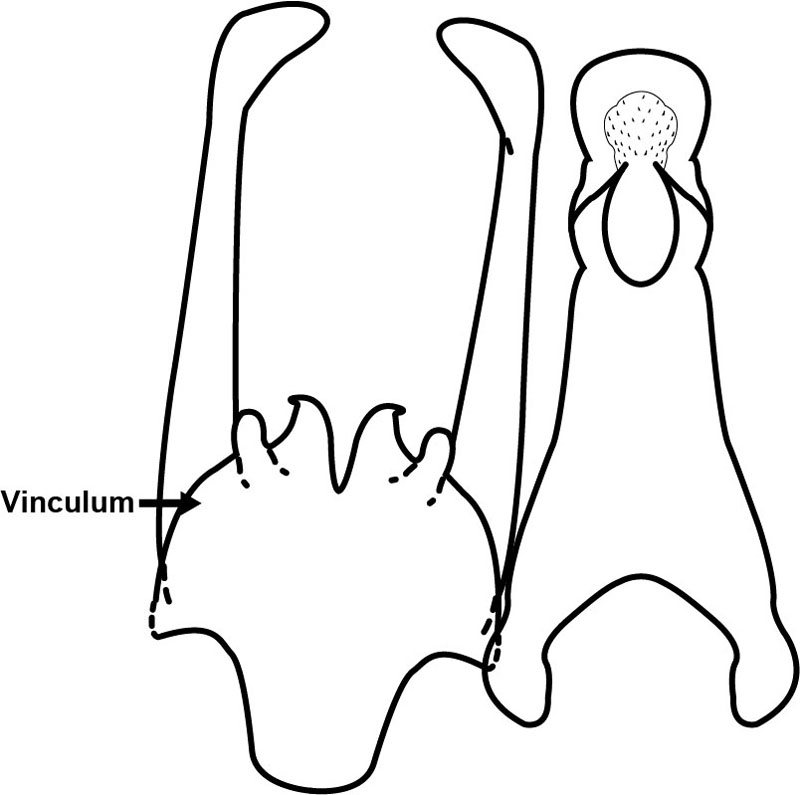 with a projected and starkly melanized thorn-shaped process medially, and phallusPhallus:
with a projected and starkly melanized thorn-shaped process medially, and phallusPhallus:
The intromittent part of the male genitalia, also known as the aedeagus.
 with a long lateral process. Females have a large and long funnel-shaped antrumAntrum:
with a long lateral process. Females have a large and long funnel-shaped antrumAntrum:
Posterior section of the ductus bursae, posterior of the colliculum.
 extending just past the anterior apophyses from the ostium, and a small stubby signumSignum:
extending just past the anterior apophyses from the ostium, and a small stubby signumSignum:
Any sclerite, sclerotized area, or discrete granular area on the wall of the corpus bursae (pl. signa).
 .
.
Immature stages
Larvae when fully grown are about 10–12 mm long. The prothoracic shieldProthoracic shield:
Also called the T1 shield. In the larva, the extensive sclerotized area of the dorsal half of the prothorax. It bears six setae on each side, and its color pattern is often diagnostic.
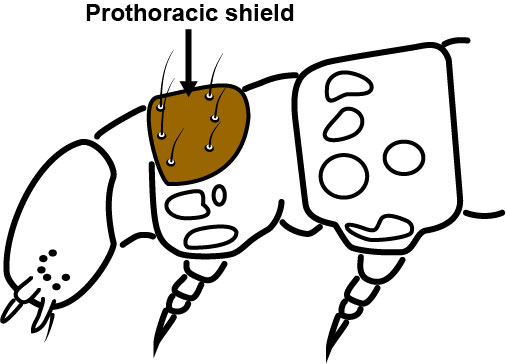 is uniformly brown to black or may have patches of pigmentation. The line joining setae L1 and S2 is posterior to stemma I, the outer tooth is poorly developed and SD1 on A9 is setiform (normal thickness). The L group of A9 is bisetose.
is uniformly brown to black or may have patches of pigmentation. The line joining setae L1 and S2 is posterior to stemma I, the outer tooth is poorly developed and SD1 on A9 is setiform (normal thickness). The L group of A9 is bisetose.
PDF - Dichotomous key to Gelechiid larvae
Similar species
This species can be distinguished by its forewing pattern: a grayish-black streak in the middle part of the wing anterior of the foldFold:
The invisible line of folding below the discal cell on the forewing.
 , abruptly demarcated one fifth from the base of the wing.
, abruptly demarcated one fifth from the base of the wing.
The poorly developed outer tooth, pale thoracic legs, bisetose L group and setiform SD1 on A9 and the western United States distribution will separate S. tangolias from other species we have studied.
Behavior
Pupation occurs amongst the debris of host-plants.
Distribution
Native to South America, a pest worldwide. USA (Southeastern, California north to Washington), South America (Peru, Bolivia, Colombia, Ecuador, Chile), Australia, New Zealand, Indonesia.
Hosts
Capsicum annuum L. (Cayenne pepper)
Solanum aviculare G. Forst. (New zealand nightshade, kangaroo apple)
Solanum laciniatum Aiton (Kangaroo apple)
Solanum muricatum Aiton (Pepino)
Solanum nigrum L. (Black nightshade)
Solanum tuberosum L. (Irish potato)
Comments
This species is known as a pest of potato or tomato in South America and the Australian region; however, in North America, it does not attack these crops but does feed on black nightshade.
Literature
Busck 1931Busck 1931:
Busck A. 1931. Two new Peruvian Microlepidoptera of economic importance (Gelechiidae and Oecophoridae). Proceedings of the Entomological Society of Washington 33: 59-63.
van Gyen 1913van Gyen 1913:
van Gyen W. 1913. Descriptions of Chili Microlepidoptera. Boletiacute;n del Museo Nacional (Santiago) 5: 338-340.
Keifer 1937Keifer 1937:
Keifer HH. 1937. California Microlepidoptera XI. Bulletin of the Department of Agriculture, State of California 26: 177-204.
Meyrick 1923Meyrick 1923:
Meyrick E. 1923 [1925]. Exotic Microlepidoptera. Vol. III. Taylor and Francis, [London].
Photo credits
Figs. 6, 7, 8: © Frans C. Griepink, Pherobank (The Netherlands)

